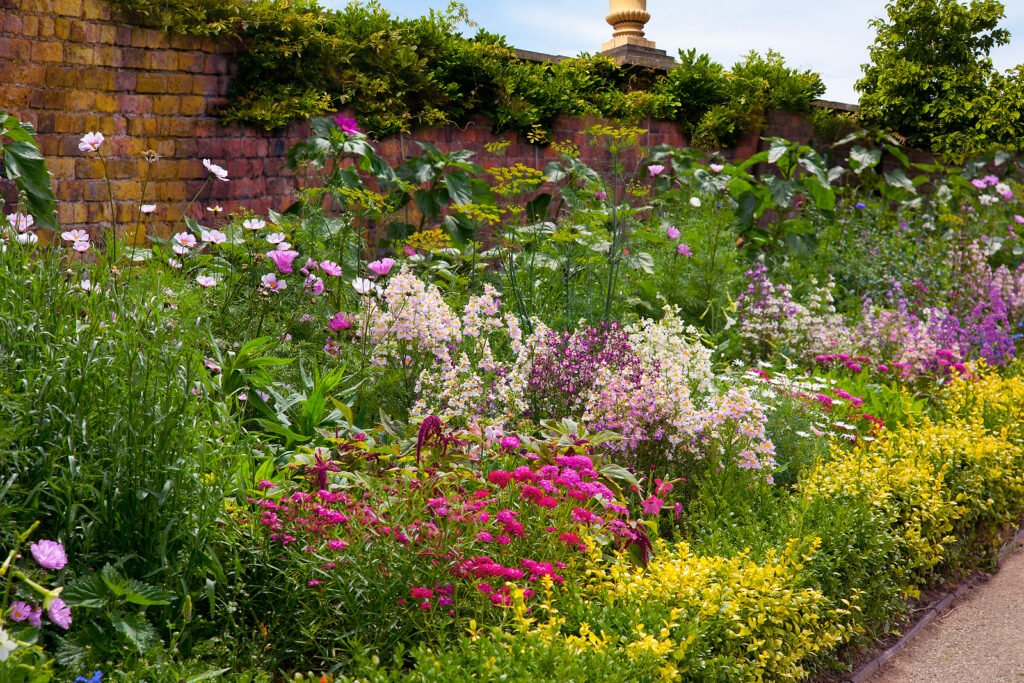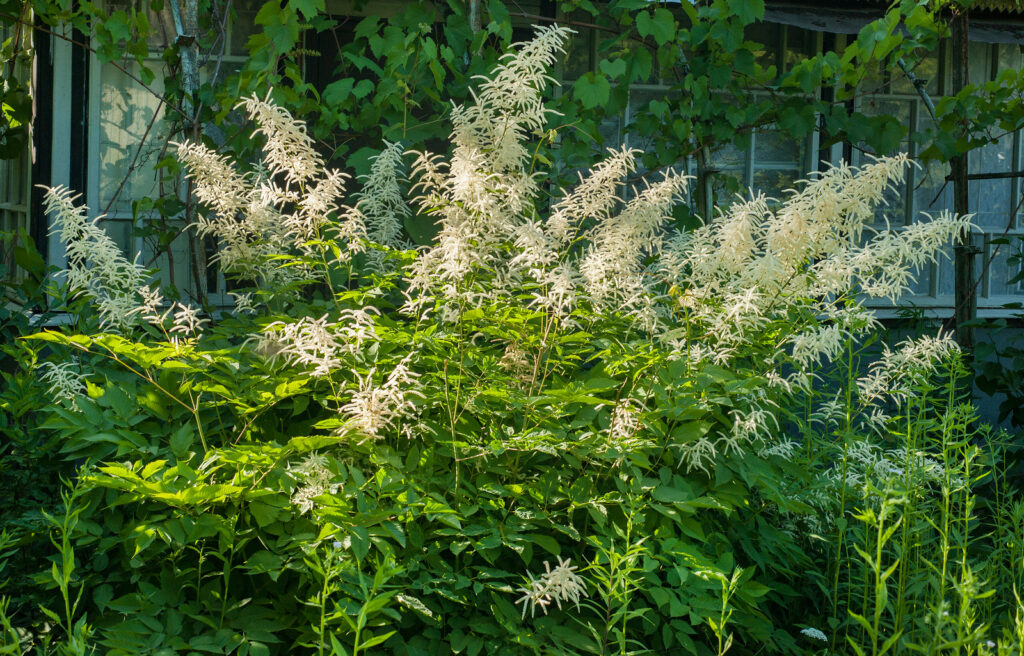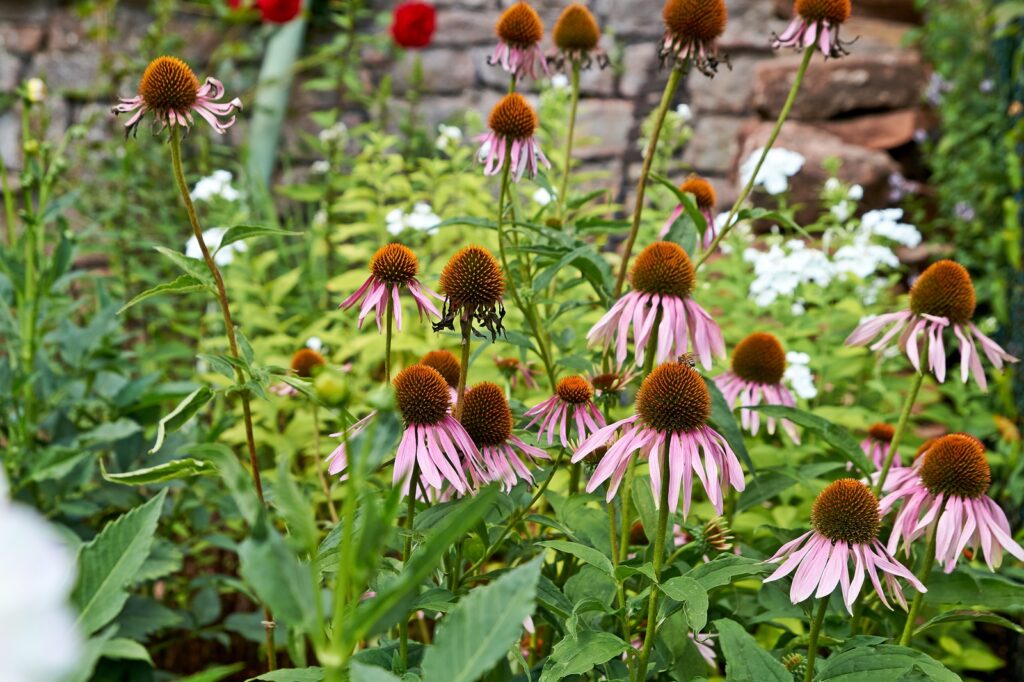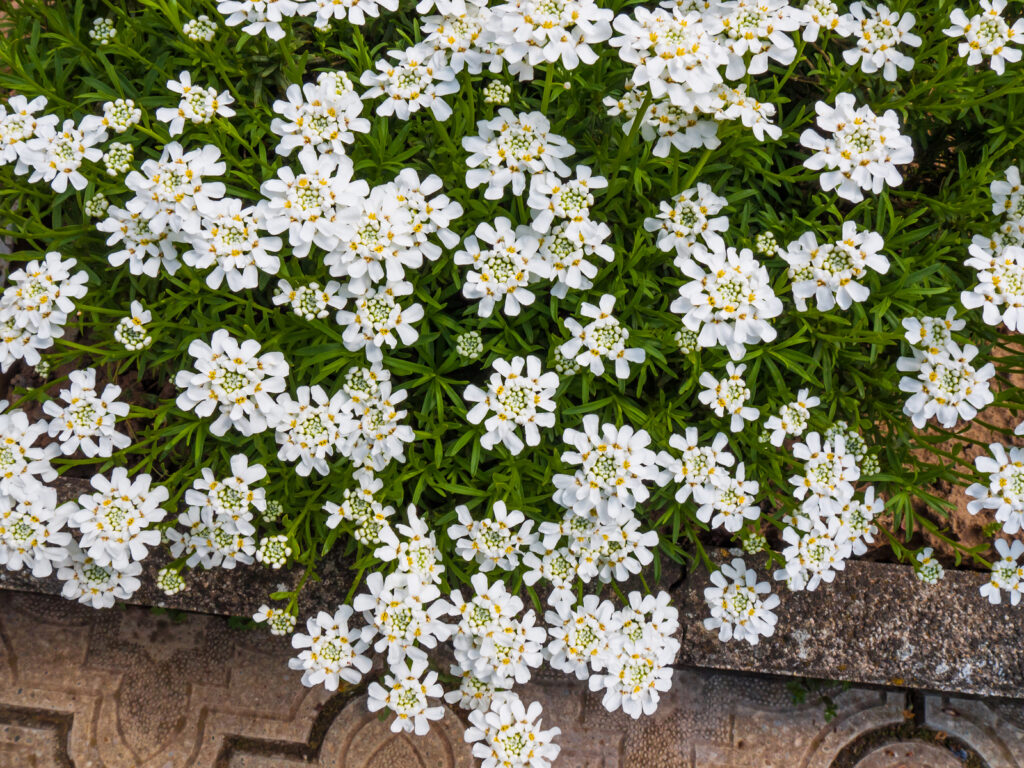Understanding the nature of plants will help you establish a garden that will be a thing of beauty rather than a disappointment.
Perennials are plants that live for three or more years. They live longer than annuals and biennials. Of course, trees and shrubs are perennial in habit, but the term perennial is generally applied to herbaceous rather than woody plants.
Most, but not all, perennials send up new branches and flower stems each year; these branches and stems die when winter comes, but the roots continue to live. Many of these perennials live indefinitely—some for years and years. Others tend to die out after three or four years unless the roots are taken up, divided and replanted every two or three years. The latter is known as “imperfect perennials.”
Over the generations, flower gardeners have favored hardy perennials such as phlox, peonies, delphinium, and bleeding heart. These favorites have become known as “old-fashioned” plants because of their hardiness, permanency, and variations of color, height, foliage, and nature of bloom. Old-fashioned plants are in truth the backbone of many modern gardens.
Perennials offer the gardener many advantages. First, as some perennials finish blooming, other perennials come into bloom; as the garden changes from week to week there is always something new to look forward to.
Second, while annuals blossom for long periods (which over a full season can become monotonous), few perennials bloom all season. That means with considered selection and arrangement, a diversity of perennials will assure continuous change in the garden from early spring until fall. Because of this ever-shifting picture, the perennial border has become more and more a feature of many gardens.

Perennial flowers in border design
The perennial border is one of the most flexible parts of the garden, having no regular or formal design but lending itself to variations according to the taste of the individual gardener.
Perennials should be arranged with consideration of their size and space allotted them in the garden. Place the tallest species in the background, especially those that provide a good display of foliage. Some tall perennials should, however, extend into the front, especially in the wider parts of the border—this will provide interest and relieve any possible monotony. Small and dwarf perennials should be used in the foreground with plans to intermediate height distributed throughout the rest of the border.
If a border is devoted entirely to perennials it should be at least 5 feet wide. If the garden is small and there is a hedge or a shrub border, the space between that feature and the lawn or path can be widened by 2 or 3 feet and beautified by planting perennials in the bed.
Perennials are always best when planted in masses of clumps; these are more interesting and attractive than hit-or-miss planting, especially if consideration is given to color harmony or contrast. Generous use of white flowers is frequently advisable.
Perennial flowers by season

Spring-flowering perennials
After the earliest flowering bulbs have gone spring color depends to a large degree upon perennials. Early iris, peonies, and columbine are notable early perennials. Other early perennials are Canterbury bells, delphinium, and foxglove. Here is a list of spring-blooming perennial favorites.
| Botanical Name | Common Name |
| Adonis amurensis | Amur Adonis |
| Alyssum saxatile compactum | Dwarf golden tuft |
| Arabis alpina | Alpine rock-cress |
| Aubreitia deltoidea | Purple rock-cress |
| Bellis perennis | English daisy |
| Claytonia virginica | Spring beauty |
| Convallaria majalis | Lily-of-the-valley |
| Dicentra eximia | Plumy bleeding heart |
| Dicentra spectabilis | Bleeding heart |
| Doronicum caucasicum | Leopards-bane |
| Euphoribia epithymoides | Cushion spurge |
| Hemerocallis flava | Lemon daylily |
| Iberis sempervirens | Evergreen candytuft |
| Mertensia virginica | Bluebells |
| Myosotis sylvatica | Forget-me-not |
| Polemonium reptans | Creeping polemonium |
| Trollius europaeus | Globe flower |
| Vinca minor | Common periwinkle |
Summer-flowering perennials
As spring blossoms fade there come into flower a vase array of summer perennials which can be classified into two groups: (1) the early summer species, and (2) the late summer species.

Early-summer flowering perennials
| Botanical Name | Common Name |
| Anchusa azurea | Italian bugloss |
| Anthemis tinctoria | Golden marguerite |
| Astilbe japonica | Japanese astilbe |
| Baptisia australis | False indigo |
| Campanula persicifolia | Peach-leaf bellflower |
| Centaurea montana | Mountain bluet |
| Coreopsis lanceolata | Perennial coreopsis |
| Echinops ritro | Globe thistle |
| Geranium sanguineum | Cranes-bill |
| Geum chiloense | Avens |
| Gypsophila paniculata | Perennial babys breath |
| Heuchera sanguinea | Coral bells |
| Lupinus polyphyllus | Perennial lupine |
| Oenothera fruticosa | Evening primrose |
| Penstemon varieities | Penstemon various |
| Polemonium caeruleum | Greek valerian |
| Thalictrum aquilegifolium | Columbine meadow-rue |
| Valeriana officinalis | Garden heliotrope |
| Veronica spicata | Spike speedwell |
| Yucca filamentosa | Common yucca |

Late summer flowering perennials
| Botanical Name | Common Name |
| Achillea millefollium | Yarrow |
| Achillea ptarmica | Sneezewort |
| Bocconia/Macleaya cordata | Plume poppy |
| Campanula carpatica | Carpathian harebell |
| Echinacea purpurea | Purple coneflower |
| Euphorbia corollata | Flowering spurge |
| Gaillardia aristata | Perennial gaillardia |
| Geranium ibericum | Iberian cranesbill |
| Hemerocallis fulva | Tawny daylily |
| Hosta | Plantain-lily |
| Liatris pycnostachya | Gayfeather |
| Limonium latifolium | Sea-lavender |
| Linum perenne | Perennial flax |
| Oenothera speciosa | Sundrops |
| Platycodon grandiflorum | Balloon flower |
| Rudbeckia laciniata | Cutleaf coneflower |
| Salvia nemerosa | Violet sage |
| Thalictrum dipterocarpum | Yunnan meadow-rue |
| Viola cornuta | Tufted pansy |

Fall flowering perennials
As summer’s heat wanes and days grow perceptibly shorter, a number of perennials come into bloom, to give the garden the benefit of their beauty and continue to blossom until frost nips them. Among fall-blooming perennials are:
| Botanical Name | Common Name |
| Aconitum fischeri | Azure monkhood |
| Anemone japonica | Japanese anemone |
| Artemisia varieties | Mugwort |
| Boltonia asteroides | Boltonia |
| Chelone glabra | Turtlehead |
| Eupatorium coelestinum | Mistflower |
| Helenium autumnale | Sneezeweed |
| Helianthus maximiliani | Maximilian sunflower |
| Helianthus rigidus | Prairie sunflower |
| Hibiscus moscheutos | Rose mallow |
| Lobelia cardinalis | Cardinal flower |
| Lobelia syphilitica | Blue lobelia |
| Rudbeckia speciosa | Showy coneflower |
| Salvia azurea | Azure sage |
| Chrysanthemum varieties | Chrysanthemum |
| Sedum spectabile | Showy sedum |

Evergreen perennials
A number of perennials retain their leaves year around. They include:
| Botanical Name | Common Name |
| Dianthus barbatus | Sweet william |
| Dianthus plumarius | Grass pink |
| Heuhchera sanguinea | Coral bells |
| Iberis sempervirens | Evergreen candytuft |
| Iris foetidissima | Gladwin iris |
| Linum perenne | Perennial flax |
| Sedum | Stonecrop |
| Teucrium chamaedrys | Germander |
| Thymus serpyllum | Mother-of-thyme |
| Yucca filamentosa | Bayonet plant |















